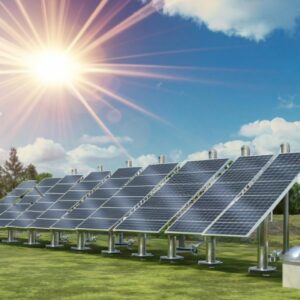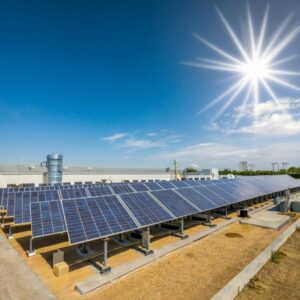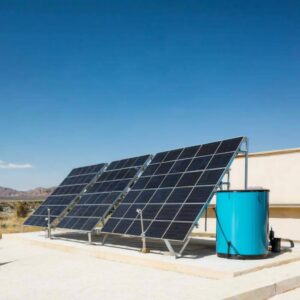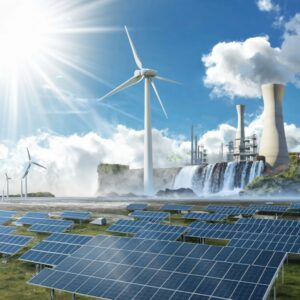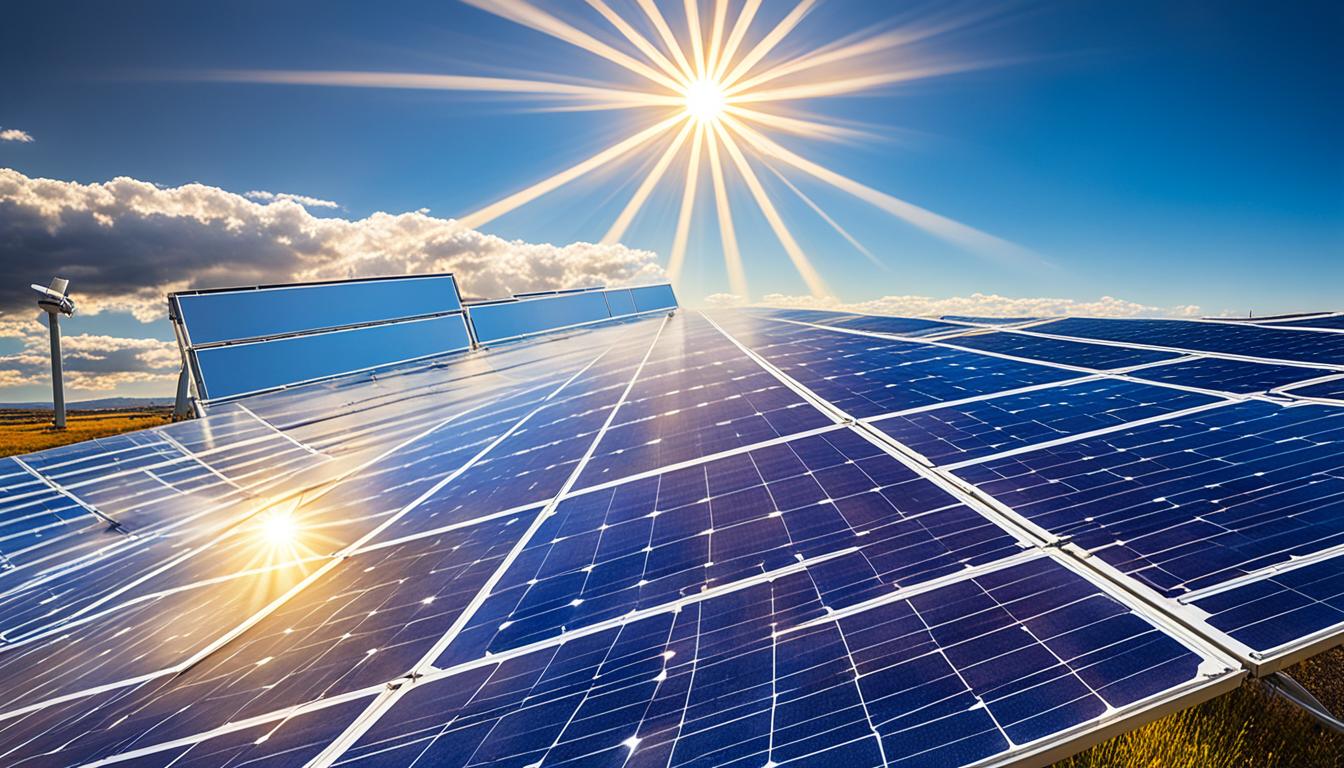
Solar energy plays a pivotal role in our transition to a sustainable and eco-friendly future. One of the most promising advancements in this field is sky solar energy, which harnesses the boundless power of the sun to generate electricity. At the heart of this renewable revolution are solar panels, the devices that capture sunlight and convert it into usable energy.
There are various types of solar panels available in the market, each with its own set of advantages and disadvantages. Monocrystalline solar panels are known for their high efficiency and durability, making them an excellent choice for maximizing energy output. On the other hand, polycrystalline panels offer a more cost-effective solution without compromising too much on efficiency. Thin-film solar panels provide a sleek aesthetic appeal but have a comparatively lower efficiency. Bifacial solar panels, however, can generate electricity from both sides, greatly enhancing their overall performance.
The future of solar panels is incredibly promising, with emerging technologies like perovskite solar cells and organic photovoltaic cells showing great potential for higher efficiency and lower costs. These breakthroughs have the potential to revolutionize the solar industry, making renewable power even more accessible and sustainable for everyone.
Key Takeaways:
- Sky solar energy harnesses the power of the sun to generate electricity.
- Solar panels come in different types, including monocrystalline, polycrystalline, thin-film, and bifacial panels, each with its own advantages and disadvantages.
- Emerging technologies like perovskite solar cells and organic photovoltaic cells hold great promise for higher efficiency and lower costs in the future.
- Solar energy is a key player in our transition towards a sustainable and eco-friendly future.
- Investing in solar panels can help reduce our ecological footprint and contribute to a more sustainable future.
Understanding Solar Panel Systems
Solar panels are an essential component of solar panel systems, harnessing the power of the sun to generate electricity. These panels are made up of photovoltaic cells that convert sunlight into usable energy. Understanding the different types of solar panels and the key components of a solar panel system is crucial for successful installation and operation.
There are several types of solar panels available in the market, each with its own unique characteristics and advantages. Let’s take a closer look at these types:
- Monocrystalline panels: These panels are made from a single crystal structure, which gives them a uniform appearance. Monocrystalline panels are known for their high efficiency and power capacity. They perform well in direct sunlight and are ideal for applications where space is limited.
- Polycrystalline panels: These panels are made from multiple crystal structures, giving them a blue color. Polycrystalline panels are generally more affordable compared to monocrystalline panels, although they have slightly lower efficiency. They are a popular choice for residential and commercial installations.
- Thin-film panels: These panels are made by depositing a thin layer of semiconductor material on a substrate, such as glass or plastic. Thin-film panels are lightweight, flexible, and offer a sleek aesthetic. However, they have lower efficiency compared to crystalline panels.
- Bifacial panels: These panels have the ability to generate power from both the front and back sides. Bifacial panels can capture sunlight reflected from the ground, increasing their overall energy output. This makes them a suitable option for installations with reflective surfaces or ground-mounted setups.
A solar panel system consists of various key components that work together to generate and distribute electricity. These components include:
- Solar cells: The photovoltaic cells within the solar panels that convert sunlight into electricity.
- Glass encapsulation: A protective layer of glass that covers and seals the solar cells.
- Backsheet: A layer that protects the rear surface of the solar panel from moisture and other environmental factors.
- Frame: A sturdy framework that provides support and protection to the solar panels.
- Junction box: A weatherproof enclosure that houses the electrical connections and components.
- Mounting and tracking systems: These systems enable the solar panels to be securely mounted and positioned for maximum sunlight exposure.
When planning for solar panel installation, it is important to consider factors such as electricity consumption, the type of solar panel best suited for the application, and the location of the installation site. This will ensure that the system meets your energy needs effectively.
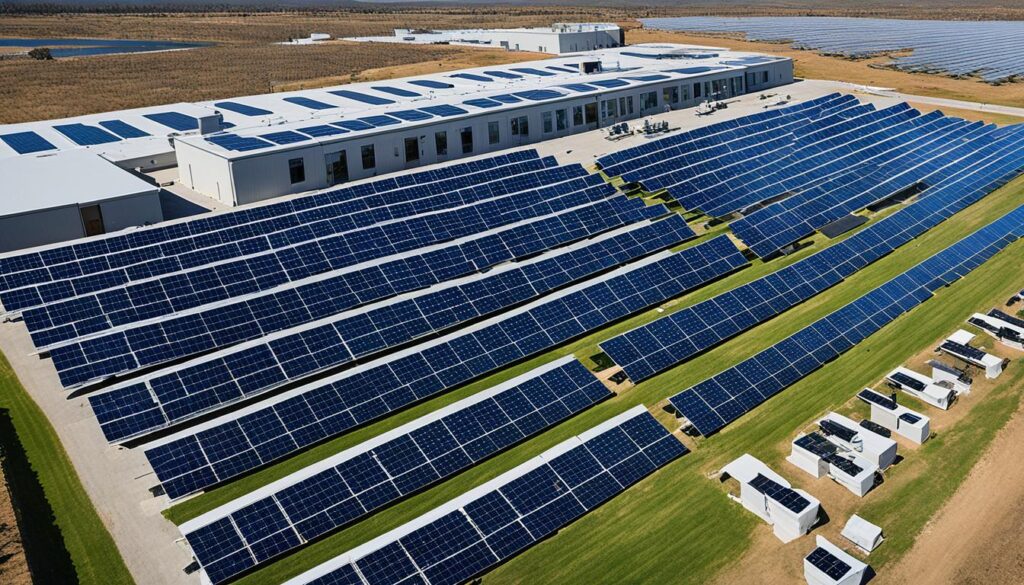
Installing a solar panel system can be done as a do-it-yourself project or by hiring professionals. It is essential to follow the necessary safety guidelines and adhere to local regulations when installing the system. Routine maintenance and monitoring are also important to ensure the optimal performance and longevity of the solar panel system.
In the next section, we will explore the promising future of solar panels and emerging technologies that are revolutionizing the solar energy industry.
Conclusion
Sky solar energy is revolutionizing the way we power our world, offering a sustainable and eco-friendly alternative to traditional energy sources. With solar panels at the forefront of this renewable power movement, we have the opportunity to embrace a brighter future.
Whether you choose monocrystalline, polycrystalline, thin-film, or bifacial solar panels, each type has its own unique advantages and disadvantages. But what is truly exciting is the future potential of solar panel technology. The emergence of perovskite solar cells and organic photovoltaic cells holds the promise of even higher efficiency and lower costs.
Understanding solar panel systems is crucial for successful installation and long-term efficiency. By leveraging the power of the sun, we can reduce our ecological footprint, decrease reliance on nonrenewable resources, and pave the way for a sustainable future. The path to a better planet begins with harnessing the power of sky solar energy.
As we look ahead, it is clear that sky solar energy is not only illuminating our present but also enlightening our path towards a renewable power source and a sustainable future. By embracing solar panels and adopting clean energy solutions, we can create a world powered by the limitless potential of the sun, working towards a greener and healthier planet for generations to come.
FAQ
What is sky solar energy?
Sky solar energy is a form of renewable power that harnesses the sun’s limitless potential to generate electricity.
What are solar panels?
Solar panels are the devices that capture sunlight and convert it into electricity. They are at the core of the sky solar energy system.
What are the different types of solar panels?
There are different types of solar panels available, including monocrystalline, polycrystalline, thin-film, and bifacial panels.
What are the advantages of monocrystalline solar panels?
Monocrystalline panels are known for their high efficiency and durability.
What are the advantages of polycrystalline solar panels?
Polycrystalline panels are more cost-effective compared to monocrystalline panels.
What are the advantages of thin-film solar panels?
Thin-film panels offer a sleek aesthetic, but their efficiency is lower compared to other types.
What are the advantages of bifacial solar panels?
Bifacial panels can generate power from both sides, maximizing energy output.
What is the future of solar panels?
The future of solar panels is promising, with emerging technologies like perovskite solar cells and organic photovoltaic cells showing great potential for higher efficiency and lower costs.
What do solar panel systems consist of?
Solar panel systems consist of various key components such as solar cells, glass encapsulation, backsheet, frame, junction box, and mounting and tracking systems.
How do I plan for solar installation?
Planning for solar installation involves calculating electricity consumption, determining the right type of solar panel, and finding a suitable installation site.
Can I install solar panels myself?
The installation process can be done DIY or by hiring professionals. It depends on your level of expertise and comfort.
How do I ensure optimal performance of my solar panel system?
It is important to conduct routine maintenance and monitoring to ensure optimal performance of your solar panel system.


